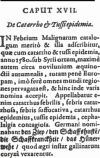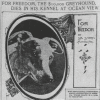Historical thoughts on influenza viral ecosystems, or behold a pale horse, dead dogs, failing fowl, and sick swine
- PMID: 20958926
- PMCID: PMC3180823
- DOI: 10.1111/j.1750-2659.2010.00148.x
Historical thoughts on influenza viral ecosystems, or behold a pale horse, dead dogs, failing fowl, and sick swine
Abstract
Objectives: To understand human influenza in a historical context of viral circulation in avian species, mammals, and in the environment.
Design: Historical review.
Setting: Global events in a variety of circumstances over more than 3,000 years time.
Sample: Comprehensive review of the historical literature including all major publications on pandemic and panzootic influenza.
Main outcome measures: Influenza pandemics, panzootics, major epidemics and epizootics, and instances of interspecies transmission of influenza A.
Results: Extensive documentation of human and animal influenza over many centuries suggests that influenza A viruses have adapted to a variety of species and environmental milieu and are capable of switching between many different hosts under widely varying circumstances.
Conclusions: The genetic elements of influenza A viruses circulate globally in an extensive ecosystem comprised of many avian and mammalian species and a spectrum of environments. Unstable gene constellations found in avian species become stable viruses only upon switching to secondary hosts, but may then adapt and circulate independently. It may be desirable to think of influenza A viruses as existing and evolving in a large ecosystem involving multiple hosts and environments. Implications for understanding human influenza are discussed.
© 2010 Blackwell Publishing Ltd.
Figures





Similar articles
-
Recent zoonoses caused by influenza A viruses.Rev Sci Tech. 2000 Apr;19(1):197-225. doi: 10.20506/rst.19.1.1220. Rev Sci Tech. 2000. PMID: 11189716 Review.
-
Influenza virus reservoirs and intermediate hosts: dogs, horses, and new possibilities for influenza virus exposure of humans.J Virol. 2015 Mar;89(6):2990-4. doi: 10.1128/JVI.03146-14. Epub 2014 Dec 24. J Virol. 2015. PMID: 25540375 Free PMC article. Review.
-
[Interspecies transmission, adaptation to humans and pathogenicity of animal influenza viruses].Pathol Biol (Paris). 2010 Apr;58(2):e59-68. doi: 10.1016/j.patbio.2010.01.012. Epub 2010 Mar 19. Pathol Biol (Paris). 2010. PMID: 20303675 Review. French.
-
The role of swine in the generation of novel influenza viruses.Zoonoses Public Health. 2009 Aug;56(6-7):326-37. doi: 10.1111/j.1863-2378.2008.01217.x. Zoonoses Public Health. 2009. PMID: 19486316 Review.
-
A possible outbreak of swine influenza, 1892.Lancet Infect Dis. 2014 Feb;14(2):169-72. doi: 10.1016/S1473-3099(13)70227-5. Epub 2013 Nov 28. Lancet Infect Dis. 2014. PMID: 24290840 Free PMC article.
Cited by
-
Equine and Canine Influenza H3N8 Viruses Show Minimal Biological Differences Despite Phylogenetic Divergence.J Virol. 2015 Jul;89(13):6860-73. doi: 10.1128/JVI.00521-15. Epub 2015 Apr 22. J Virol. 2015. PMID: 25903329 Free PMC article.
-
The influenza of 1918: Evolutionary perspectives in a historical context.Evol Med Public Health. 2018 Aug 31;2018(1):219-229. doi: 10.1093/emph/eoy024. eCollection 2018. Evol Med Public Health. 2018. PMID: 30410762 Free PMC article. Review.
-
Mosaic nanoparticle display of diverse influenza virus hemagglutinins elicits broad B cell responses.Nat Immunol. 2019 Mar;20(3):362-372. doi: 10.1038/s41590-018-0305-x. Epub 2019 Feb 11. Nat Immunol. 2019. PMID: 30742080 Free PMC article.
-
Equine Influenza Virus and Vaccines.Viruses. 2021 Aug 20;13(8):1657. doi: 10.3390/v13081657. Viruses. 2021. PMID: 34452521 Free PMC article. Review.
-
An avian outbreak associated with panzootic equine influenza in 1872: an early example of highly pathogenic avian influenza?Influenza Other Respir Viruses. 2010 Nov;4(6):373-7. doi: 10.1111/j.1750-2659.2010.00181.x. Influenza Other Respir Viruses. 2010. PMID: 20958931 Free PMC article.
References
-
- Fleming G. Animal Plagues: Their History, Nature, and Prevention. London: Chapman and Hall, 1871.
-
- Porter K. Pale Horse, Pale Rider; Three Short Novels. New York: Harcourt, Brace and Company, 1939.
-
- Koch R. Die Aetiologie der Milzbrand‐Krankheit, begründet auf die Entwicklungsgeschichte der Bacillus Anthracis. Beiträge zur Biologie der Pflanzen (Breslau [Wrocław]) 1876; 2:277–310.
Publication types
MeSH terms
LinkOut - more resources
Full Text Sources
Medical

